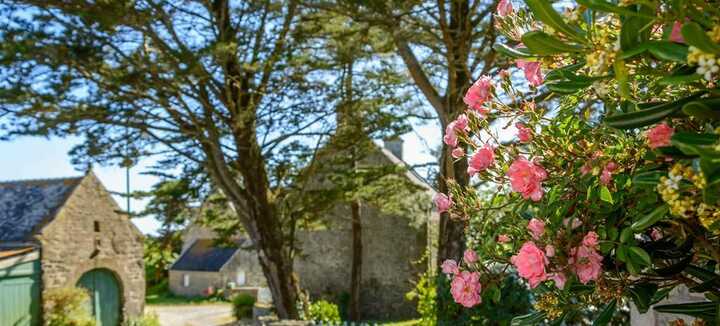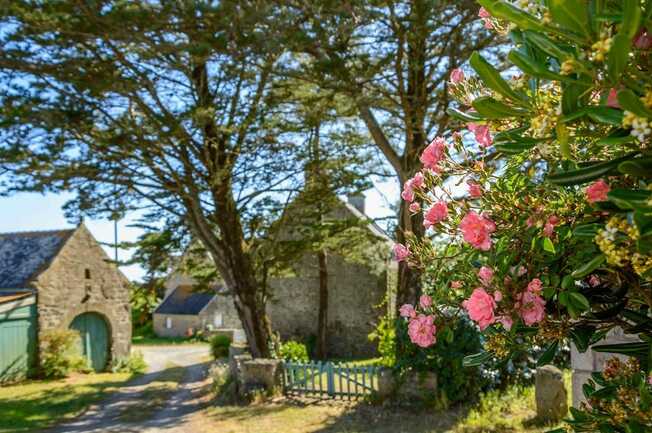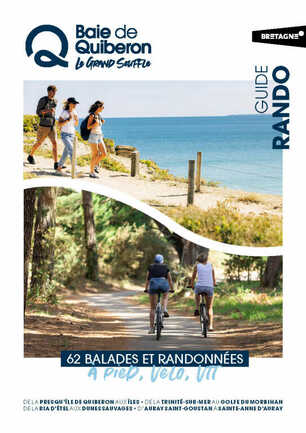
Plouharnel - Circuit de Sainte Barbe
Chapelle Sainte Barbe
56340 Plouharnel
56340 Plouharnel
Features of the route
Difficulty
Easy
Length
01:00:00
Distance
5.3km
Chapelle Sainte Barbe
56340 Plouharnel
56340 Plouharnel
Easy Yellow markings
The Breton village of Sainte-Barbe braves the wrath of the ocean under the protection of its chapel. Isolated, the villagers lived here in family clans, with narrow crossings linking the dwellings.
Step by step :
Start: Opposite the chapel entrance, turn right. Pass a fountain and turn left. After the wash-house, follow the path to the fork, where you'll see an old windmill (private property).
1- Panoramic view of the ocean, the dune belt, the wetland and the landier, the village of Sainte-Barbe. Turn right at the engraved stone, and cross a small wooden bridge into the commune of Glevenay (see the old wash-house restored by the villagers). Enter the village, take the path on the right and, on the left, the chemin de Lostiguen. Keep left.
2- Cross the road, take the path opposite, before the railroad line, towards Kerfourchelle. Cross the D781. Follow the path. View of the Vieux Moulin menhir alignments. With your back to the alignments, take the track opposite.
3- At the next intersection, continue straight ahead on the track. Find the GR®34.
4- At the next crossroads, you can return directly to Sainte Barbe via Kerpontic and the Kersily campsite. Alternatively, continue straight on to Kerarno.
5- Cross the Kerarno road to reach the Chapelle Saint-Antoine. Continue along the track.
6- At the entrance to the hamlet of Kergazec, take the road on the left as far as the departmental road. Cross it and follow it to the left for about 50 m, then take the first track on the right.
7- Follow the track to Sainte-Barbe. Take rue de Kernizan through the village. Turn left on rue du Kreisker to find the chapel.
A) A primitive chapel was founded on the return from a crusade. The façade of the listed 11th-century Chapelle Sainte-Barbe is in the Renaissance style. The main event of the Revolution in Brittany took place here: the landing of the emigrants, known as the "Expedition of Quiberon" (July 1775). It was again on display in 1940: the Germans, surrounded by the Allies, withdrew to 200 bunkers built in the dunes.
B) The large dune site, as far as the eye can see, is home to numerous plant species, some of which are protected at European level (Loesel's liparis, summer spiranthe) due to their rarity. To discover: dune carnation, sea grape, maritime panicum, maritime santolin.
The Breton village of Sainte-Barbe braves the wrath of the ocean under the protection of its chapel. Isolated, the villagers lived here in family clans, with narrow crossings linking the dwellings.
Step by step :
Start: Opposite the chapel entrance, turn right. Pass a fountain and turn left. After the wash-house, follow the path to the fork, where you'll see an old windmill (private property).
1- Panoramic view of the ocean, the dune belt, the wetland and the landier, the village of Sainte-Barbe. Turn right at the engraved stone, and cross a small wooden bridge into the commune of Glevenay (see the old wash-house restored by the villagers). Enter the village, take the path on the right and, on the left, the chemin de Lostiguen. Keep left.
2- Cross the road, take the path opposite, before the railroad line, towards Kerfourchelle. Cross the D781. Follow the path. View of the Vieux Moulin menhir alignments. With your back to the alignments, take the track opposite.
3- At the next intersection, continue straight ahead on the track. Find the GR®34.
4- At the next crossroads, you can return directly to Sainte Barbe via Kerpontic and the Kersily campsite. Alternatively, continue straight on to Kerarno.
5- Cross the Kerarno road to reach the Chapelle Saint-Antoine. Continue along the track.
6- At the entrance to the hamlet of Kergazec, take the road on the left as far as the departmental road. Cross it and follow it to the left for about 50 m, then take the first track on the right.
7- Follow the track to Sainte-Barbe. Take rue de Kernizan through the village. Turn left on rue du Kreisker to find the chapel.
A) A primitive chapel was founded on the return from a crusade. The façade of the listed 11th-century Chapelle Sainte-Barbe is in the Renaissance style. The main event of the Revolution in Brittany took place here: the landing of the emigrants, known as the "Expedition of Quiberon" (July 1775). It was again on display in 1940: the Germans, surrounded by the Allies, withdrew to 200 bunkers built in the dunes.
B) The large dune site, as far as the eye can see, is home to numerous plant species, some of which are protected at European level (Loesel's liparis, summer spiranthe) due to their rarity. To discover: dune carnation, sea grape, maritime panicum, maritime santolin.


